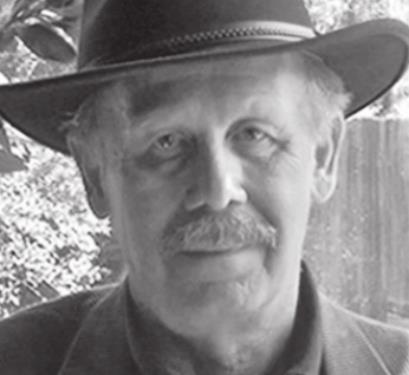A death-defying air show on Nov. 19, 1911 inspired a Midland blacksmith to plunge ahead with his bold plan to conquer the clouds. By no means the first Texan to get hooked on flying, John Pliska would certainly not be the last.
Texas is well remembered as the birthplace of military aviation. Beginning in 1917, Kelly Field provided pilot training for the newly formed Army Air Corps, and Randolph Field was later known as “The West Point of the Air.” But civilian Texans’ love affair with the airplane began much earlier.
Some folks in parts of Central Texas still insist the Wright Brothers robbed Jacob Brodbeck of his rightful place in the history books. According to local stories, the immigrant inventor coaxed a mysterious craft into the Lone Star skies in 1865 - 38 years before Kitty Hawk.
During his Civil War experiments, Brodbeck purportedly progressed from miniature models to a full-scale version capable of sustained flight. Driven by a metal spring, the craft supposedly soared over the treetops before losing power and dropping to earth like a rock.
Other than vague newspaper accounts, however, no evidence exists to substantiate the word-of-mouth stories of Brodbeck’s fantastic feats. In fact, he never claimed to have successfully defied the law of gravity nor did he attempt to duplicate the stunt before his death in 1909 in Gillespie County.
The main character in another legend was a Delaware native, who settled at a hamlet north of Waco. Around the turn of the century, William Downing Custead is said to have completed the five-mile round trip from Elm Mott to Tokio aboard a curious contraption equipped with a gasoline engine and several flapping wings.
Once again, proof is as flimsy as the aircraft in question, and chances are the exciting event never happened. A trueblue eccentric, Custead walked out on his family and promising career to devote himself to doing absolutely nothing. The professional drifter spent his last years as a seaside hermit combing the beaches of Hawaii.
The first verified violation of Texas airspace occurred over Houston on Feb. 18, 1910. Tempted by a $20,000 purse offered by the Houston Post and a real estate developer, a Frenchman buzzed amazed onlookers in a fragile biplane.
Among the awe-struck spectators were three Houstonians - a fireworks factory hand, a son of a rich landowner and machinist Shorty Walker - hard at work on a flying machine of their own. Later that same year, Walker put the finishing touches on the creation he may have flown on a November afternoon.
If the blue-collar daredevil ever got off the ground, he remained remarkably silent on the subject. Walker’s son swore that he never once mentioned the cloud-hopping accomplishment.
John Pliska was another European exile with an avid interest in the wild blue yonder. Assisted by a friend named Coggin, he started tinkering with a light-weight plane in the 1890’s and perfected an imitation bird with a steel skeleton and canvas skin.
Depending upon 50 horses from a mail-order motor, Pliska made his maiden voyage in 1912 using a dry lake bed north of Midland as a runway. Other hair-raising flights followed, and he posted a personal best with a 15-minute jaunt that reached a record altitude of 60 feet.
Convinced he was pushing his luck, Pliska dismantled his marvel and stored it in the rear of his blacksmith shop. Discovered after his death in 1956, the unique antique was preserved for posterity and put on exhibit at the Midland-Odessa airport.
Far and away the most famous early aviator from the Lone Star State was Sam Cody of Birdville, now known as Haltom City, a Metroplex suburb east of Fort Worth. Though totally illiterate, in the brand-new science of aeronautical design he was a genius.
A fearless thrill seeker, Cody crossed the English Channel in 1903 holding on for dear life to a giant kite towed by a ship. Signing a lucrative contract with the British army, he engineered a series of dirigibles and powered airships before turning his amazing talent to the construction of winged aircraft.
In October 1908 Cody soloed his premier plane, the first ever manufactured in Great Britain. The next year his equally intrepid wife earned the distinction of being the first woman to view the British Isles from the air and reportedly reached her destination without losing her luggage.
Killed in a 1913 crash, Sam Cody was posthumously hailed by his adopted country as a national hero of the highest rank. Fifty thousand Britons showed up for his funeral procession, and in a break with treasured tradition, the dashing foreigner was the first civilian in British history to be buried with full military honors.
Not bad for a boy from Birdville, who could neither read nor write.


